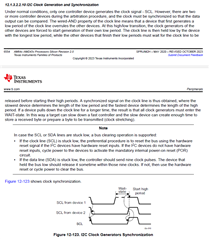Other Parts Discussed in Thread: AM62A7, AM6412, AM6422, , AM2434, SK-AM64B
Hi TI Experts,
I have the below queries regarding the I2C interface:
- Need information on the number of I2C interfaces available
- Termination of I2C interfaces when used as I2C interface and not used as I2C interface
- Any additional recommendations / Guidelines
- Any concerns on Interfacing SoC Non-Failsafe I2C to devices that are powered before the SoC- Ex PMIC
- Any exception that are required to be considered when using the I2C interfaces
- Can the I2C interface be used to interface with devices supporting SMBus or PMBus
Let me know your thoughts.








